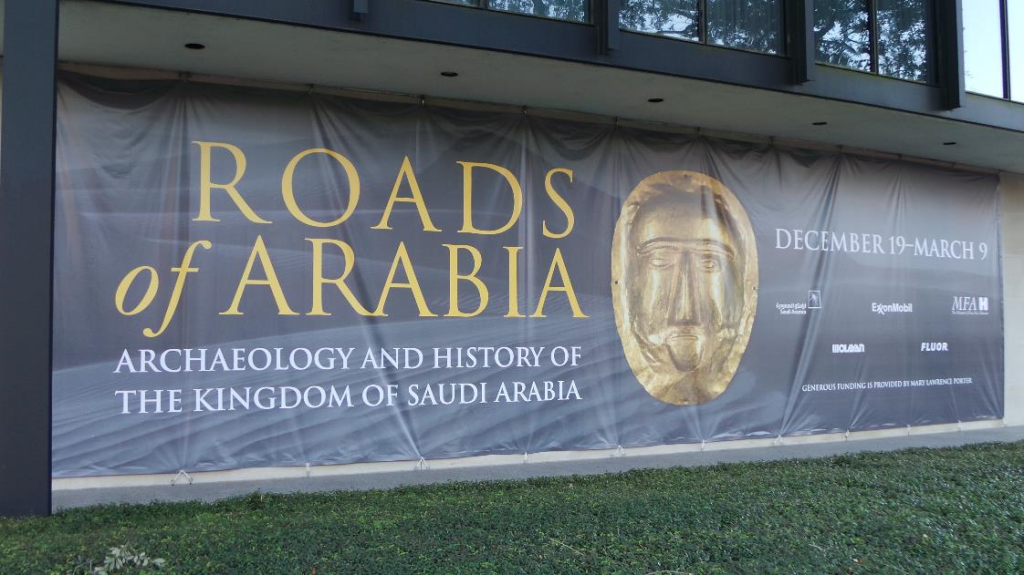The Roads of Arabia traveling exhibit is currently residing at the Museum of Fine Arts, Houston (MFAH), until March 2014. The exhibit displays historic artifacts from Arabia, including from present day Saudi Arabia, Bahrain, Yemen and Oman, as well as from Persia and the Roman Empire. For me, the most interesting item on display was a large wooden silver-plated door that formed the main door to the holy Ka’ba, the cube-shaped building inside the Grand Mosque in Mecca (Makkah), in what is today Saudi Arabia, and toward which the world’s Muslims face when making their five daily prayers. The door – or at least the silver plating – was made in the 17th century during the reign of Ottoman Sultan Murad IV – probably in Istanbul – and was installed at the Ka’ba until at least the late 1930s, after which it was replaced with a new door.
The exhibit presents artifacts from a great expanse of Arabian history and geography, reflecting ancient civilizations and trade links and pilgrimage routes from across the region. The artifacts include pre-Islamic statues and pottery created by the Dilmun people, whose society was centered on eastern Arabia and the island of Bahrain, as well as clay and glass containers originating from various regions within the Roman Empire. There were also many items from the region’s Islamic history, including Arabic-script engraved gravestones from an early Muslim cemetery in al-Ma’la in the valley of al-Hujun north of Mecca, and ornate Qur’ans that belonged to the Saudi royal family.
The title of the exhibit refers to the different pathways that the Arabian people have taken around their own lands, as well as the routes people from other civilizations have taken to Arabia, whether for trade or for pilgrimage to the holy cities of Mecca and Medina. Trade and pilgrimage has attracted people from many different civilizations and geographic regions to Arabia, which, over centuries, has made Saudi Arabia an meeting point of diverse cultures and interests. Despite these interconnections, Saudi Arabia has retained its distinctive Arab flavor and the exhibit reflects the uniqueness of Arab civilization.
I was particularly interested in seeing objects from the specific places that I have visited in the Eastern Province of Saudi Arabia as well as Bahrain, including pottery and glassware.
This exhibit provides a small but rather spectacular sampling of the historic riches that have originated from Arabia and other places in the wider region.
Due to restrictions enforced by the museum, I was not able to take photographs of any of the artifacts on display. A weighty book, in terms of both its physical weight and the detail of its content, can be purchased from the museum shop. The book is titled Roads of Arabia and includes photographs of many of the objects on display in the exhibit, as well as detailed descriptions of the objects and their context.
The exhibition is on display until March 9, 2014, in the Caroline Wiess Law Building at 1001 Bissonnet, Houston, Texas 77005. Details about the opening hours can be found at mfah.org.


No comments yet.